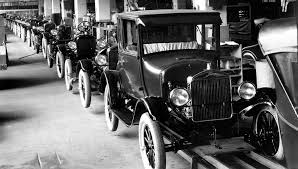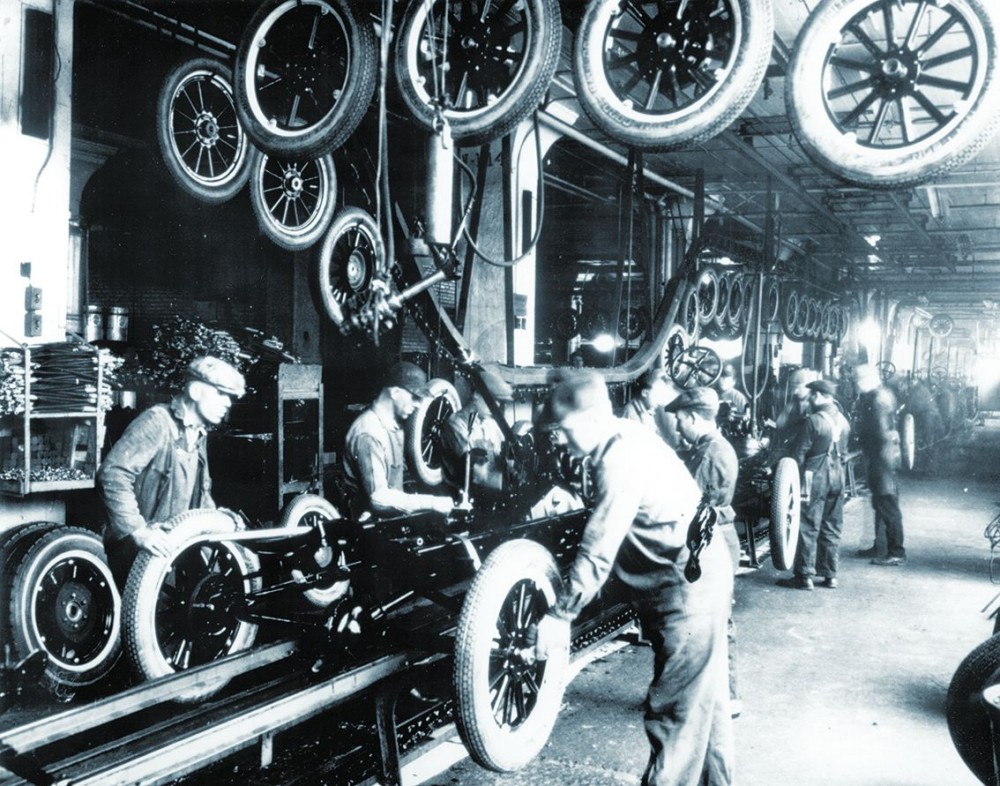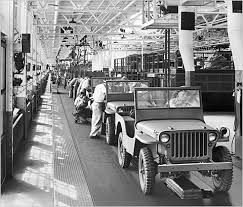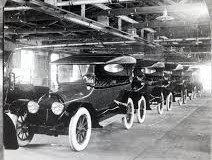Assembly Line and Mass-Production
Henry Ford's invention of the assembly line was very ingenious and was a pivotal triumph to automotive monopolization. Ford made the assembly line in 1913 and within days his production rate increased significantly. According to History, "On December 1, 1913, Henry Ford installs the first moving assembly line for the mass production of an entire automobile. His innovation reduced the time it took to build a car from more than 12 hours to two hours and 30 minutes". Ford had designed the Model T five years prior and with the combination of the assembly line and the practical and reliable Model T, he achieved substantial success. Over the years, Ford's production rate became increasingly noticeable in how much faster he was producing cars compared to other companies. By 1923, Ford was making 6,700 cars a day and it took him four minutes and thirty seconds to make a single car. As maintained by the New York Times May 23, 1923 edition, "Ford's decision spells out prosperity for Detroit and renewed confidence for the entire car industry. Ford is now producing an average of 6,700 cars a day". History states, "The mass production techniques Henry Ford championed eventually allowed Ford Motor Company to turn out one Model T every 24 seconds". That was the all-time record for a car produced in the shortest amount of time. In 1927 Henry Ford made 4,312,456 automobiles - as stated by New York Times December 4 edition, "The total production this year of the Ford Motor Company was 4,312,456 passenger automobiles and motor cars", ".....with the approach of 1928 Chevrolet factories has an output of around 1,000,000, and that is virtually assured". Therefore, Ford Motor Company produced a little over 4.3 times the amount of cars made by Chevrolet factories. Henry Ford broke barriers because he substantially mass-produced cars, explicit above.




Credit: Picture 1 - Hemmings.com Credit: Picture 2 - PBS.org Credit: Picture 3 - HowStuffWorks Credit: Picture 4 - Ponocorecords Credit: Picture 5 - New York Times December 4, 1927 Edition
Impact on America and World War ll Assembly Line Production
Ford's automobiles were extremely ubiquitous throughout America. In the December 4, 1927 issue, New York Times states, "With introduction of the new Ford car marking the return of Henry Ford as an energetic force in the automobile world is expected, to his former position as the largest producer of low-priced motor vehicles in the world, a condition of renewed optimism has been imparted throughout every branch of the automobile industry. This accelerated interest also has been manifested in the widespread personal enthusiasm with which the initial appearance of the new Model A has been greeted". You can infer that the public was filled with anticipation with the new Model A. Henry Ford truly impacted America.
World War ll: Utilization of Assembly Line
Upon the request of the government, Henry Ford used the assembly line to produce bombers, jeeps, and other military vehicles. As claimed by HowStuffWorks, "Ford production during World War ll was transformed to aid the war effort", "The Willow Run Plant made B-24 bombers, jeeps, tank engines, and a wide array of other military hardware with the assembly line". Without his contribution, the military would not have had the means necessary to quickly produce all the military items needed to fight Germany. Once again, Henry Ford broke barriers and impacted America even in times of war.